We’ve traveled to Florida a lot in the past few months – including St. Petersburg, Miami, and St. Augustine. On a recent trip, we stopped in Tallahassee to see the Alfred Maclay Gardens State Park. The 1,100-acre park features over six miles of walking, biking, and horseback riding trails along two lakes, as well as a 28-acre historic garden teeming with over 60 varieties of azaleas and 150 cultivars of camellias.
The majority of the park and the trails are open year-round. However, park staff only open the Historic Gardens to the public from January through April.
Historic Gardens
Alfred Maclay, a wealthy New York executive, bought the former hunting plantation in 1922 for a winter vacation spot. With a love of gardening, he spent the next two decades creating what he named Killearn Gardens, after his ancestral village in Scotland. Maclay drew upon his travels to gardens in Europe, Asia, and the United States to develop a botanical oasis consisting of both native and exotic plant species.
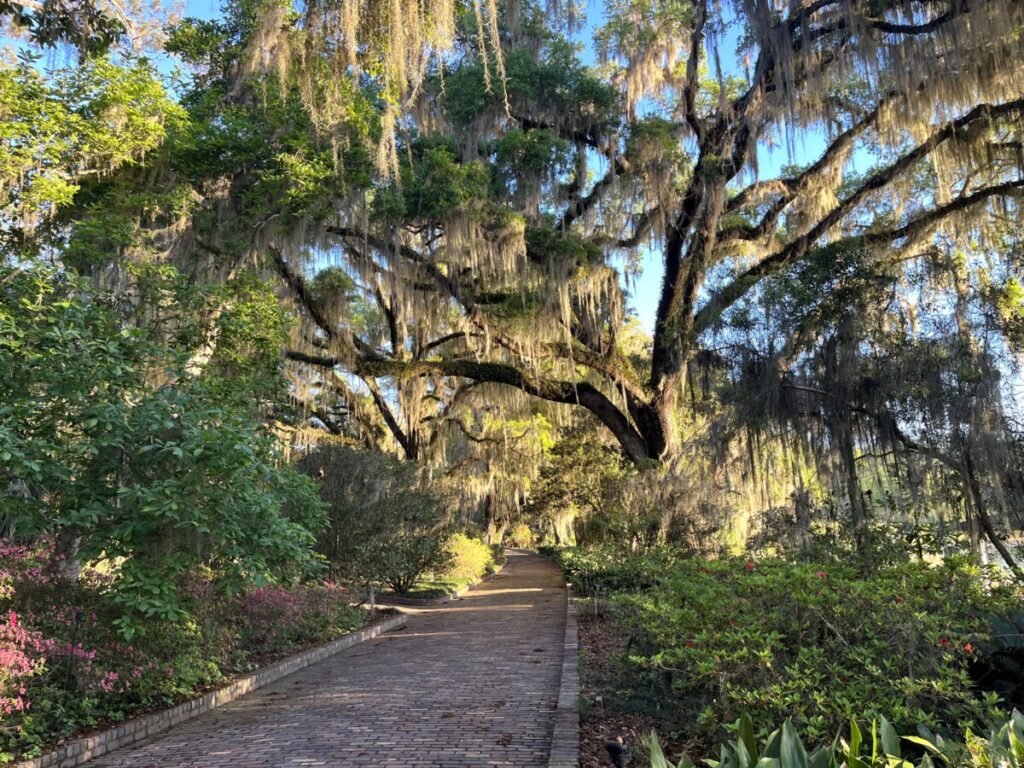
The Maclay family opened the gardens to the public for Easter sunrise services during the 1940s. However, after Alfred died in 1944, his widow Louise donated Killearn Gardens to the state of Florida in 1953.
Lake Hall
Walking among live oaks dripping with Spanish Moss past the visitor center, guests follow a brick path around the gardens. QR codes on signposts connect to short videos describing the points of interest.
We could stay on the brick path lined with camellias and azaleas, but nature trails beckoned us to other areas of the gardens. After traversing woodland paths, Lake Hall came into view.
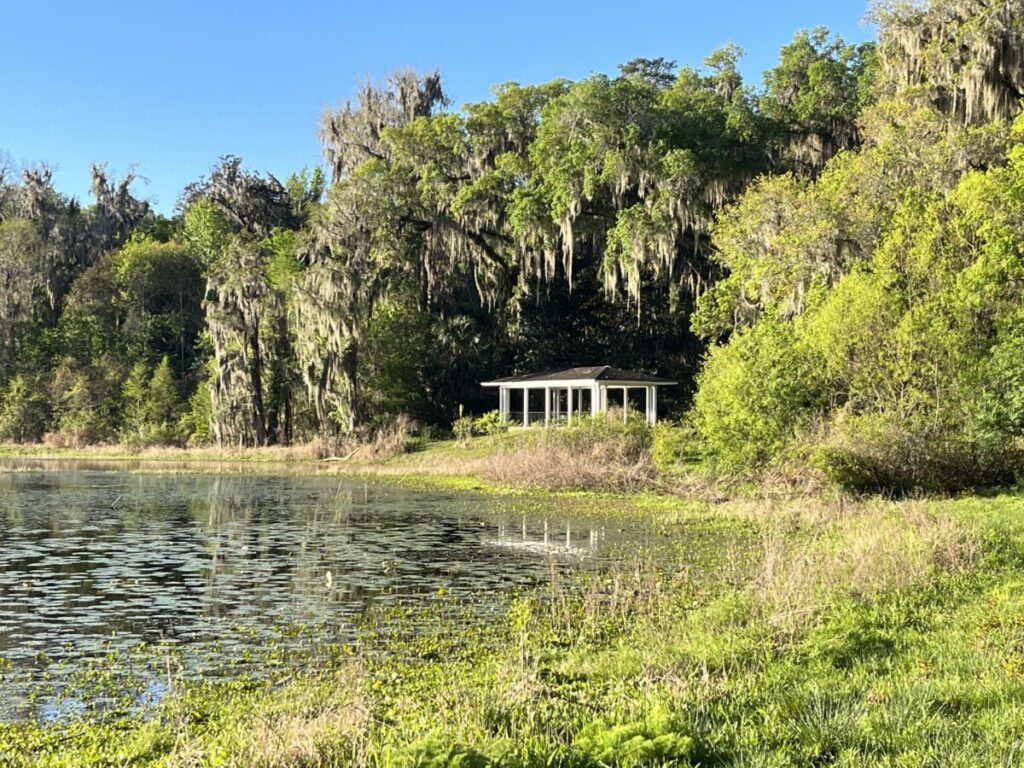
While residential property holders own most of the shoreline today, the park provides a beach, picnic, and swimming area. Park visitors may fish (with a license) or rent kayaks to enjoy the lake further.
Black Pond and Azalea Hillside at Maclay Gardens
Next, we explored a small pond reflecting colors from the surrounding trees. Completed after Maclay’s death in 1944, Black Pond provides benches for quiet reflection and meditation. Blue dye (not noticeable) in the water prevents algae growth.
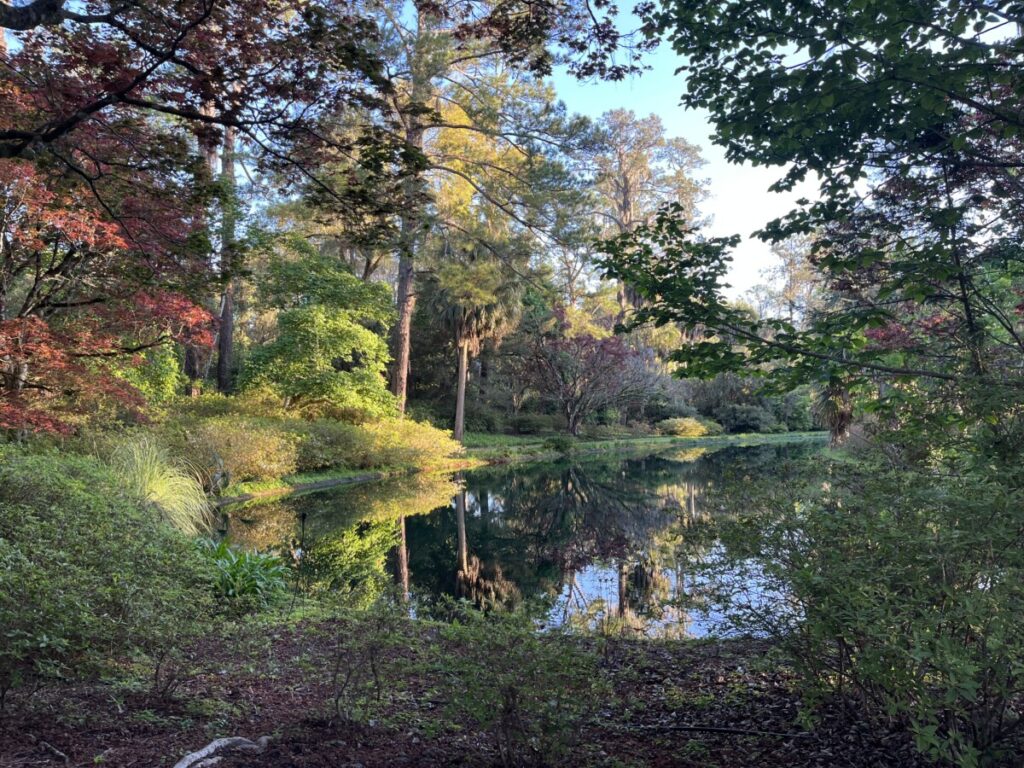
From this point, we walked to the Azalea Hillside. During the blooming season, large splashes of color burst from the ground for all to enjoy. Unfortunately due to the mild winter, most of the azaleas peaked before our visit.
Reflection Pool, Walled Garden, and Secret Garden
A popular spot for weddings came up shortly. On one side, we could see Lake Hall. On the other side, a large reflection pool flanked by white azaleas led up a hill to a walled garden.
Ivy and creeping fig drape the six-foot tall brick walls and a pair of lion sculptures sit at the entrance. Inside the walled garden, a bronze sculpture of a century plant, commissioned by Louise Maclay, sits in a small circular pool bordered by liriope. Pansies bloom every winter in the garden as well.
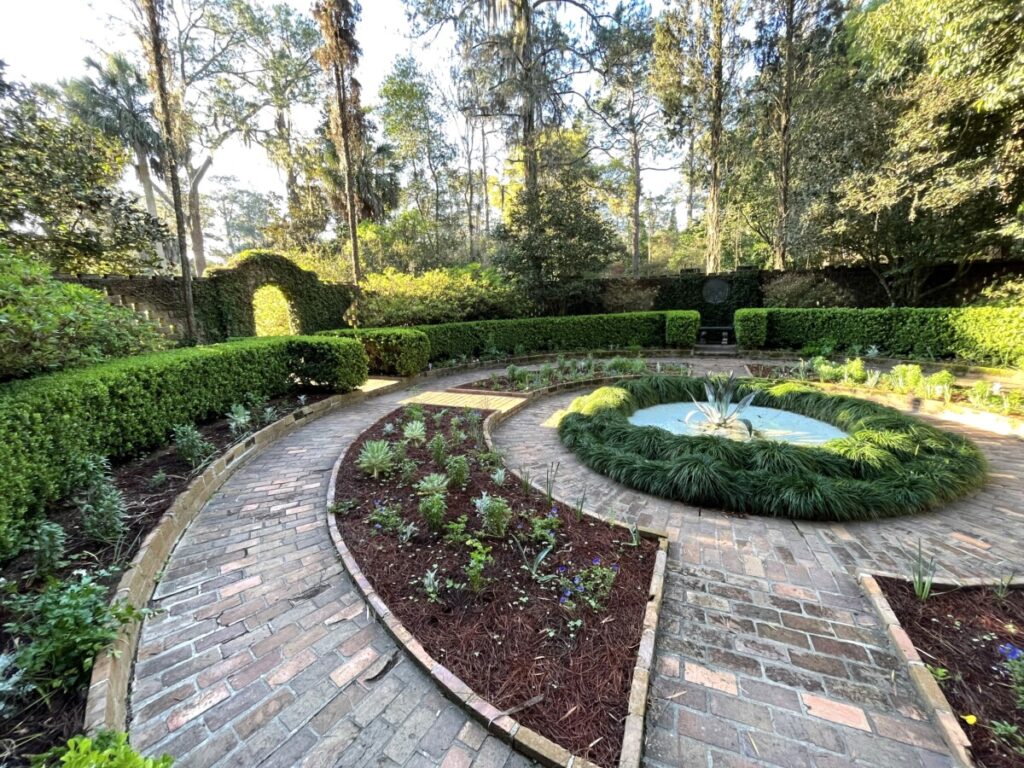
Secret Garden and Camellia Walk at Maclay Gardens
From there, the path brought us to the Secret Garden – a place Maclay liked to go to escape. A wrought iron seating area greeted us, but we continued on to the Camellia Walk.
Maclay planted his first camellia along the brick-lined walk connecting the main house to the walled garden. Purchased for $75, the original “Aunt Jetty” camellia died in 2011 after a hard winter. However, horticulturists estimate the shrub was roughly 200 years old.
The Maclay House
Promptly at 9 am, a ranger spotted us and invited us into the Maclay home. While the historic gardens open from 8 am to dusk from January through April, the house museum opens only from 9 am-5 pm during these months.
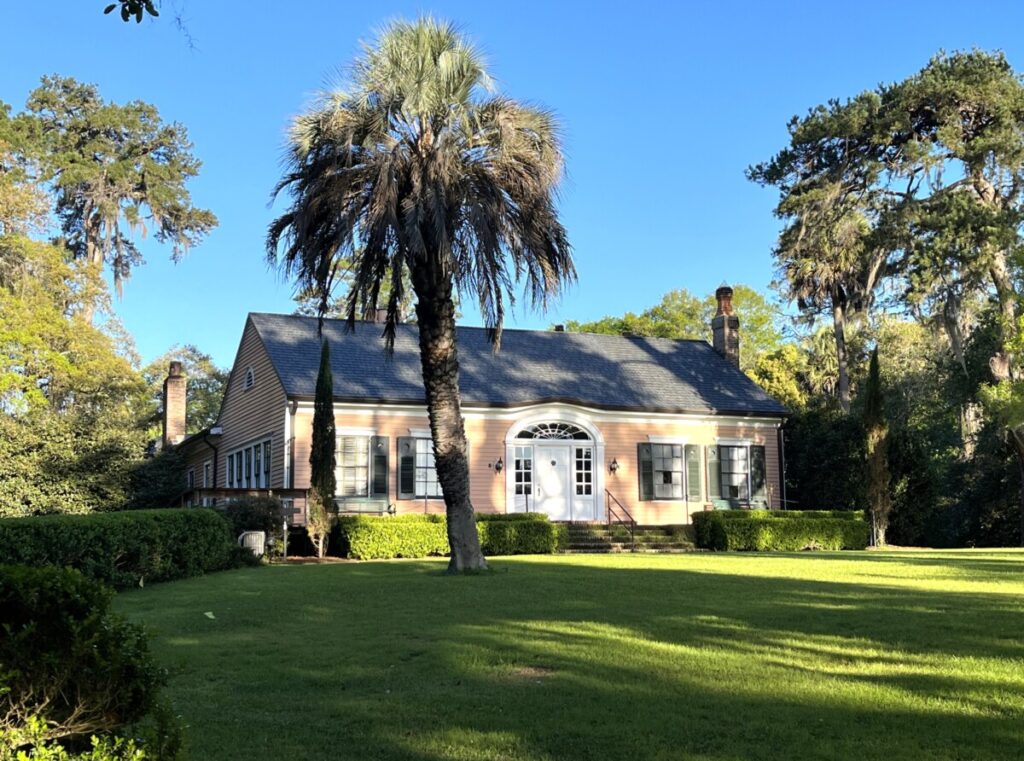
Ushering us into a large welcoming living room with several separate seating areas, the ranger told us to walk around the house freely. He soon started the video in the adjacent room detailing the history of the Maclay family and gardens.
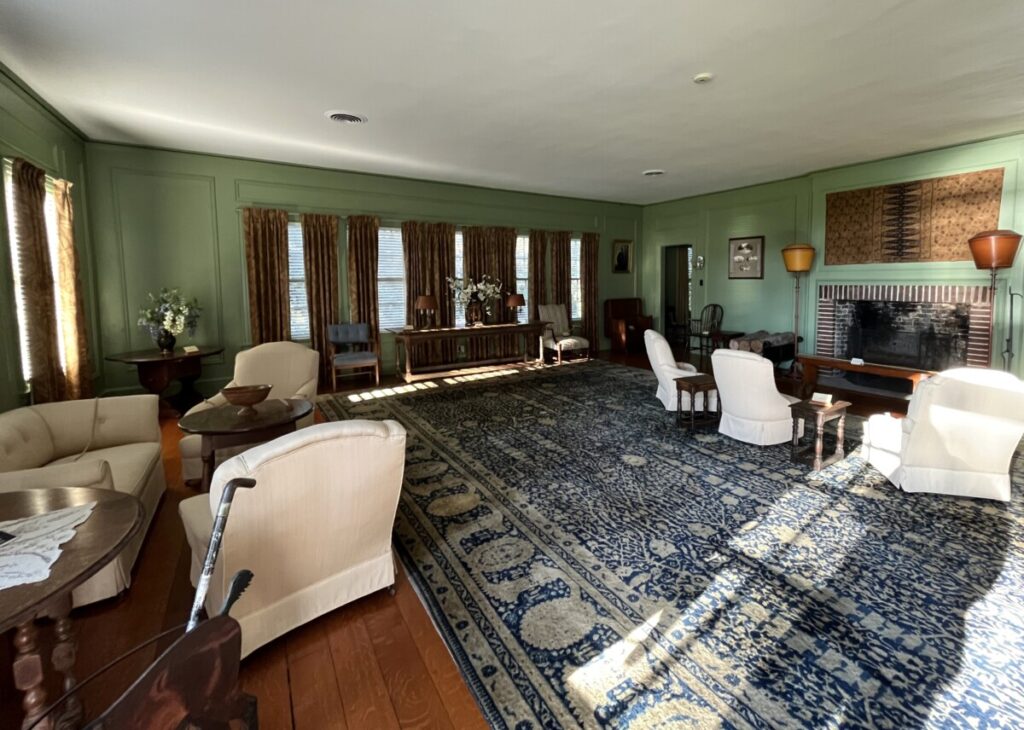
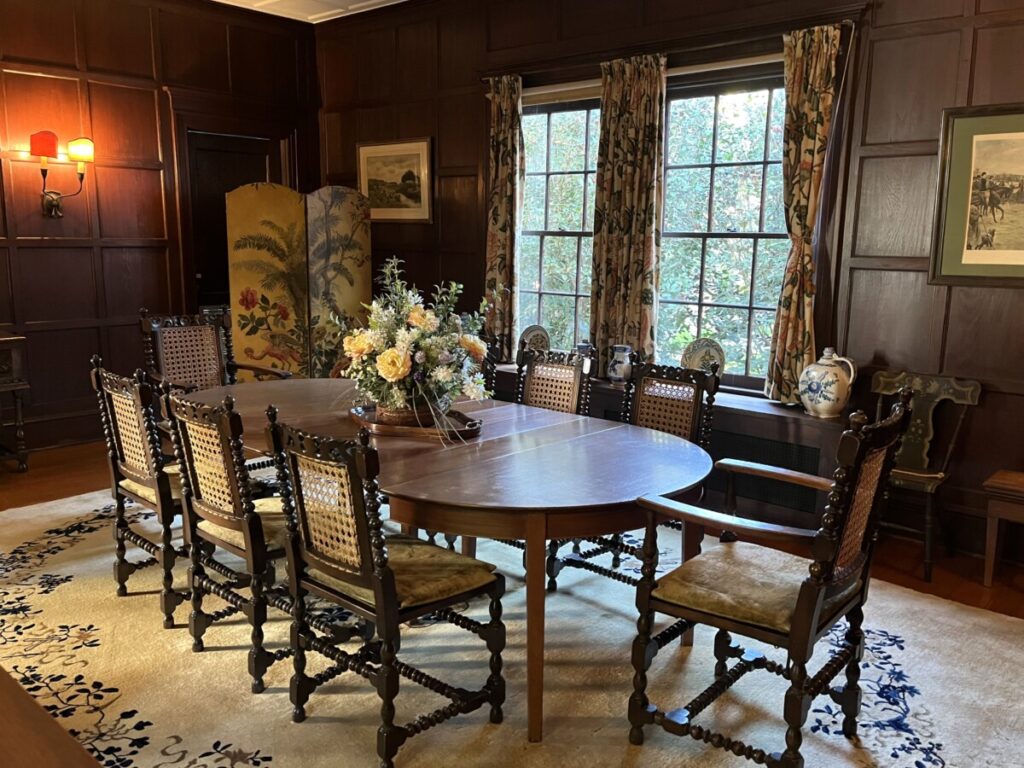
While not extravagant, the Maclay’s house exuded a country estate atmosphere and suited the gardens perfectly. We wandered through the main living room, library, and dining room, after watching the video in what was once a front bedroom. A back room displayed Maclay’s horse and dog breeding trophies, in addition to family pictures.
Fees and More Information
Even though most flowers finished their blooming cycle by the time of our visit in mid-March, we found the historic gardens worthy of a stop totaling about an hour. If time allowed, we would have taken the 3-mile Lake Overstreet trail
To enter the state park, visitors pay $6 per vehicle at three honor pay stations. Gardens entry (January through April) is an additional $6 per adult and $3 per child (ages 2-12).
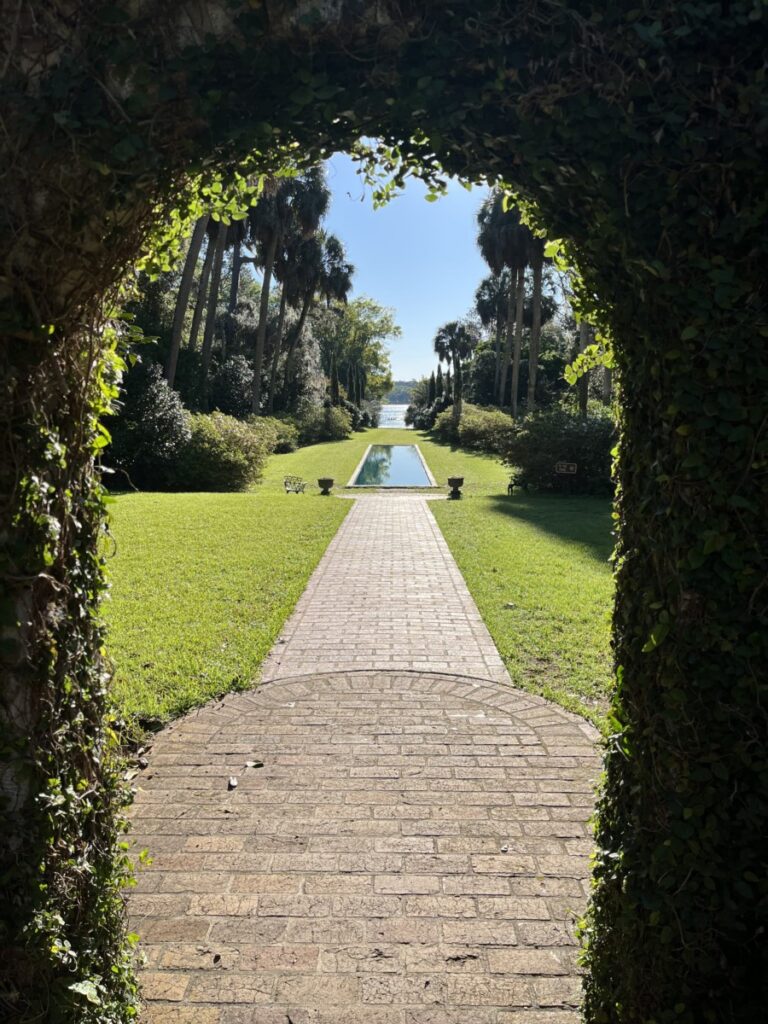
For more information, visit the Alfred B. Maclay Gardens State Park website here.
